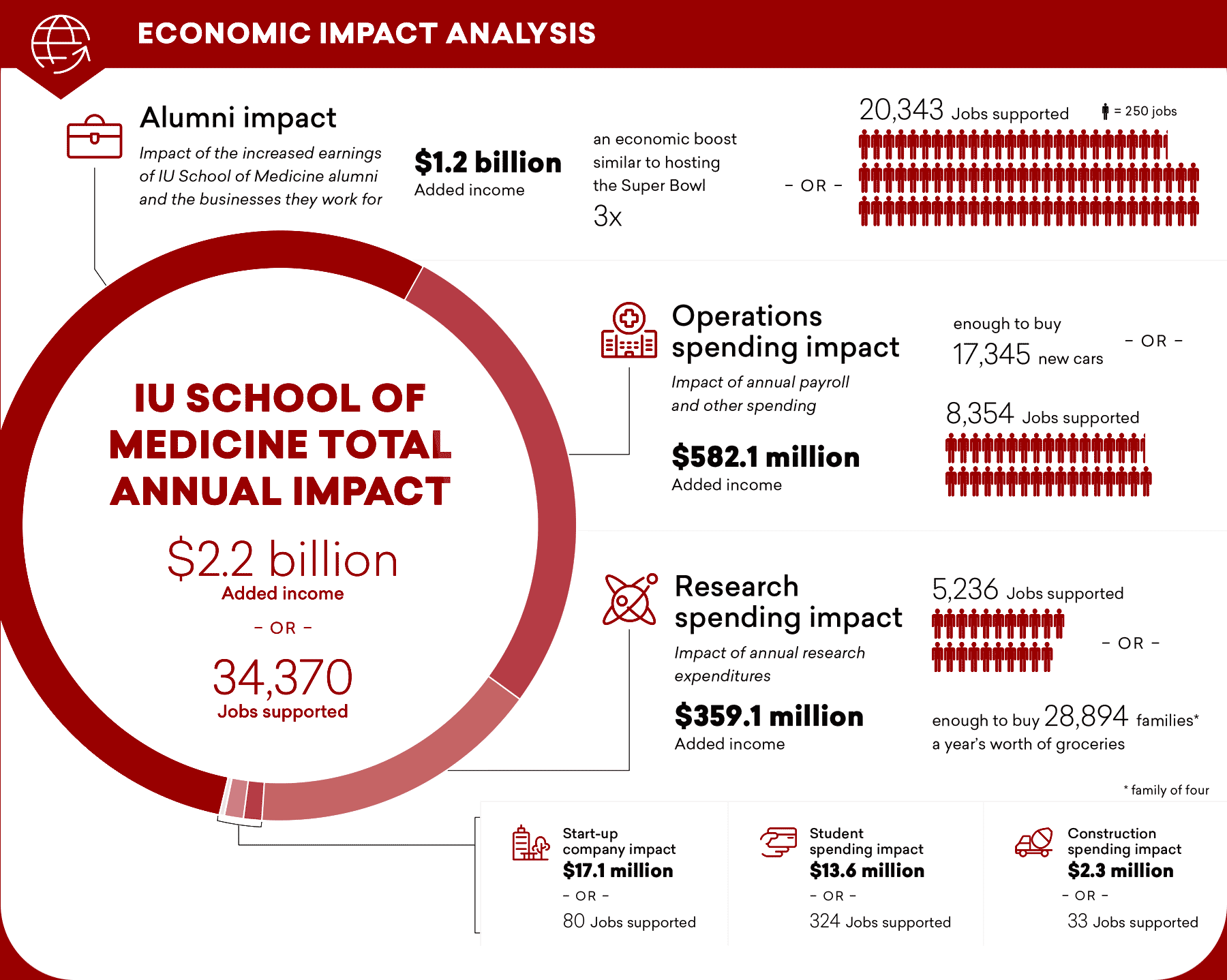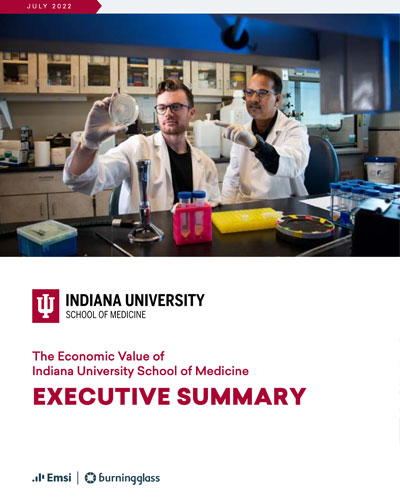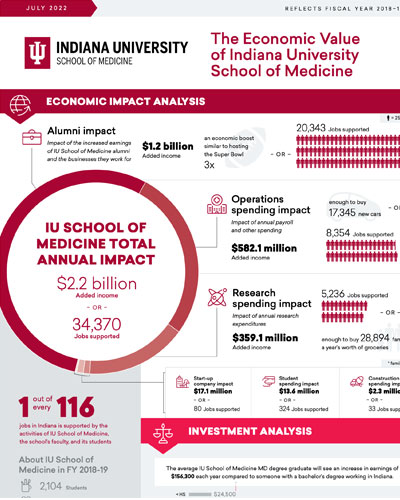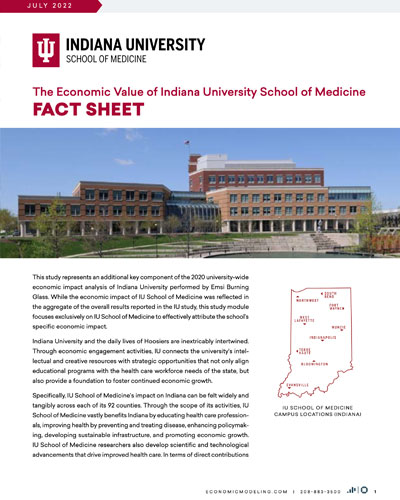The Indiana University School of Medicine, the largest medical school in the U.S., delivers $2.2 billion in annual income to Indiana's economy through its investments in student success, medical research and health care innovation, and service toward improving the lives of the people of Indiana and beyond.
IU School of Medicine generates $2.2 billion annual economic impact on state
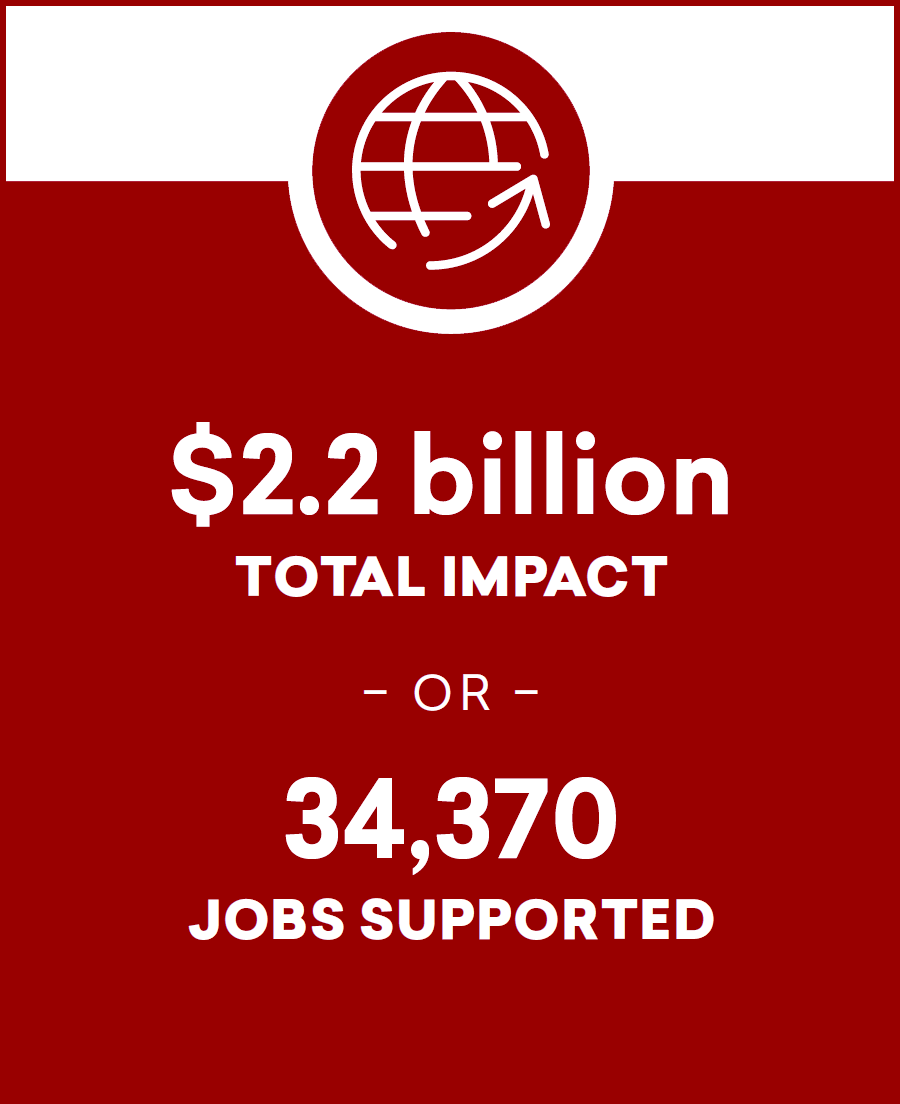
The school's financial impact is equivalent to supporting 34,370 jobs -- or one out of every 116 jobs in the Hoosier state -- according to the results of a new economic impact and investment analysis revealed today by the school and IU's Office of the Vice President for University Relations.
The "Economic Impact Value of Indiana University School of Medicine" study, which examined academic and financial reports and industry and employment data for fiscal year 2019, also demonstrated that students and state taxpayers receive a "great return for their investments in an IU School of Medicine education."

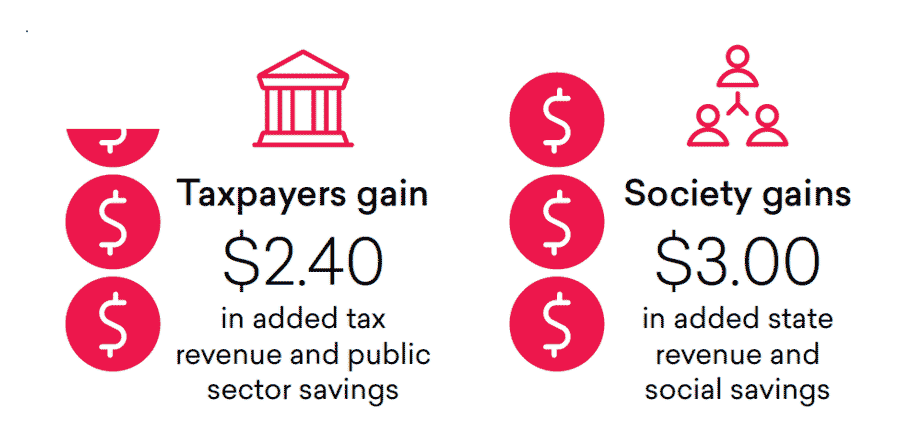
- The average annual return for IU School of Medicine students is 29.5 percent, which far surpasses the U.S. stock market's 30-year average rate of return of 10.6 percent.
- For every dollar students invest in their education at the IU School of Medicine, they will gain $8.90 in higher future earnings.
- For every tax dollar spent educating IU School of Medicine students, taxpayers will receive an average of $2.40 in added tax revenue and public sector savings over the course of the students' working lives.
- For every dollar invested in the IU School of Medicine, citizens in Indiana will receive a cumulative value of $3 in societal savings related to health care, crime and income assistance.
- The $2.2 billion impact of the IU School of Medicine is equal to 0.6 percent of the total gross state product of Indiana.
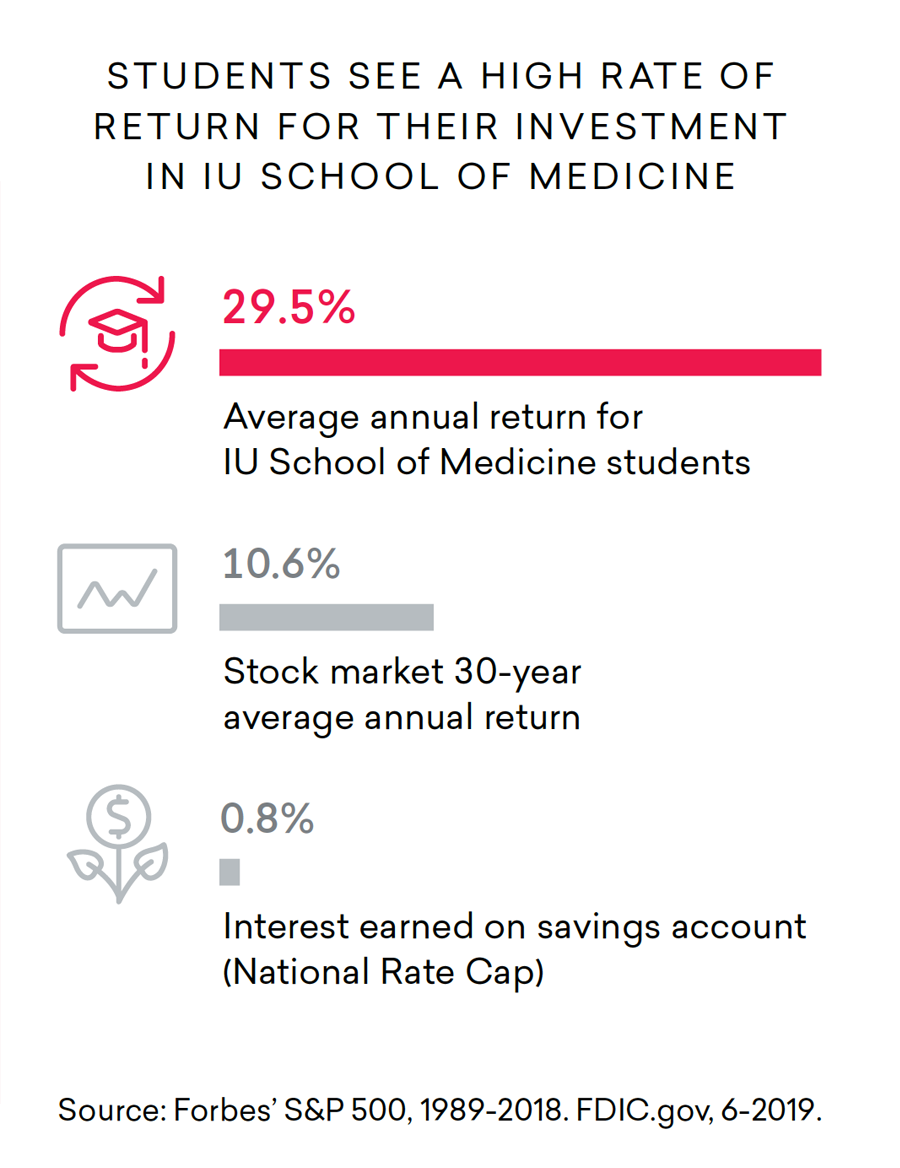
The study was commissioned by IU and conducted by Lightcast, formerly Emsi Burning Glass, a leading provider of economic impact studies and labor market data to educational institutions in the U.S. and internationally. Applying a conservative methodology and using only the most recognized indicators of economic impact and investment effectiveness, the study measured the economic impacts created by the IU School of Medicine on the state's business community and the benefits it generated in return for the investments made by its key stakeholder groups -- students, taxpayers and society.
A national leader in medical research and education, the IU School of Medicine has more than 60 academic departments and specialty divisions across nine campuses statewide serving more than 2,100 students. As the largest producer of Indiana's doctors and surgeons, the IU School of Medicine plays a central role in supporting the state's health care talent strategy. The school employed 5,449 full-time and 1,088 part-time faculty and staff in FY 2019. Of these employees, 99 percent worked and resided in the state.
The $2.2 billion in income that the IU School of Medicine delivered to the state's economy in FY 2019 is equal to the sum of the school's flow of spending on operations, research and construction; the impact of its start-up companies; the spending of its students while attending school; and the impact of its alumni.
Expressed in terms of employment, the school's impact supported 34,370 jobs across several of the state's key industrial sectors. This included 15,232 jobs in health care and social assistance, 8,862 in government (education and non-education) and 7,548 jobs in manufacturing and related fields.
According to the study, more than half of the school's total economic impact is a result of increased earnings of IU School of Medicine alumni and the businesses for which they work. Thousands of physicians who received their education and clinical training at the IU School of Medicine are employed in Indiana. They contributed to school alumni generating $1.2 billion in added income to the Hoosier state in FY 2019 -- an economic boost similar to Indiana hosting the Super Bowl three times.
“IU School of Medicine plays a vital role in building healthy communities—training future doctors and scientists, making lifesaving discoveries, developing cutting-edge technology and therapies, and improving the health of Hoosiers. This analysis shows that the School of Medicine also plays a major role as an economic engine in the state, generating and supporting significant employment and economic development in Indiana.”
– Jay L. Hess, MD, PhD, MHSA, IU School of Medicine Dean, IU Executive Vice President for University Clinical Affairs
Strengthening Indiana innovation, talent and entrepreneurship
The study underscored the success of the School of Medicine to fill Indiana's talent pipeline with first-rate physicians who, in turn, provide high-quality health care to the people of Indiana beyond. It also reflects how the school fosters an environment for medical research and health care innovation to flourish.
From FY 2016 to FY 2019, the IU School of Medicine received 300 invention disclosures, filed 412 new patent applications and produced 125 licenses.
Additionally, the IU School of Medicine spent $142.6 million on payroll to support research activities in FY 2019. This, along with $296 million in other research spending, created a net total of $359.1 million in added income for the state economy. This added income is equivalent to supporting 5,236 jobs.
That year, IU School of Medicine start-up companies added another $17.1 million in income to the Indiana economy, which is equivalent to supporting 80 jobs.
“This impact study underscores the critical role that the IU School of Medicine plays in advancing the state's life sciences and health care sectors. The school's clinical research activities, and its health care innovation, power a multibillion-dollar sector in Indiana. The IU School of Medicine has helped create a vibrant ecosystem where medical solutions are being discovered and developed.”
– Michael Huber, IU Vice President for University Relations
Providing students with high returns on their investments
In FY 2019, the IU School of Medicine served 2,104 students, who, in choosing a graduate medical education, decided to forego income they would have earned had they not pursued an advanced education. Their investment in their education amounted to a present value of $160 million.In return for their investment, however, IU medical students will receive a stream of higher future earnings that will continue to grow throughout their working lives. For example, the average IU School of Medicine doctorof medicine graduate from FY 2019 will see annual earnings that are $156,300 higher than a person with a bachelor’s degree working in Indiana.
About the study
Data and assumptions used in the study are based on several sources, including the FY 2019 academic and financial reports from IU School of Medicine, industry and employment data from the U.S. Bureau of Labor Statistics and U.S. Census Bureau, outputs of Emsi Burning Glass’s Multi-Regional Social Accounting Matrix model, and a variety of studies and surveys relating education to social behavior. The study applies a conservative methodology and follows standard practice using only the most recognized indicators of economic impact and investment effectiveness.
